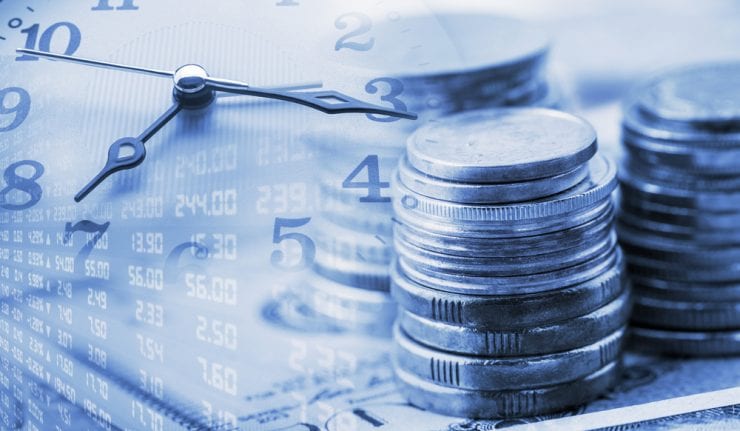Active ETFs vs. passive ETFs is a key question for investors.
In this article about active ETFs vs. passive ETFs (exchange-traded funds), learn:
- What active and passive ETFs are in the real world
- The pros and cons of each
- The main differences between them
- The bottom line: should you invest in them?
This article provides important details regarding active and passive ETFs that investors can use to differentiate between the two and optimize their decisions when choosing which is best for their portfolio.
What are Active and Passive ETFs?
An active ETF aims to beat the performance of the index that it is tracking. The fund managers that actively lead these ETFs have the goal of investing to bring in higher returns than a corresponding index. While traditional index ETFs (passive ETFs) seek to replicate the performance of the corresponding indexes, active ETFs respond to market trends and the investment holdings can be changed to better fit the state of the market. Thus, an active ETF shouldn’t just mirror the returns of an index, as the fund manager is adapting the fund to the fluctuating market.
Passive ETFs are essentially traditional index ETFs because they seek to track specific indexes or sectors within the market. This means that passive ETFs are exposed entirely to the risks of the market. Instead of aiming to beat the returns of an index, these funds only seek to match the performance of the index. Investors of passive ETFs usually choose this option over actively managed ETFs because of how difficult it is to beat the market and because the fund fees and expenses are much less.
The Pros and Cons of Active and Passive ETFs
One aspect of active ETFs that is both a benefit and a risk is the fact that their performance often deviates from the performance of the related index, so it could either outperform or underperform that index. Many investors see the potential for higher gains as a major benefit rather than a negative. However, an obvious negative of Active ETFs is that the fees are higher than passive ETFs although they are usually lower than mutual funds.
Passive ETFs have lower fees than mutual funds and lower fees than active ETFs because there aren’t any fund managers. Also, there are usually tax advantages to holding passive ETFs, because compared to active ETFs and mutual funds, the capital gains obtained are lower because they generally trade much less. Perhaps the biggest risk of passive ETFs is the fact that their performance is solely dependent on the market and index. It moves with the market so any downward dip in the index would mean a potential loss for the fund without a fund manager to prevent or mitigate losses.
Examples of Active & Passive ETFs
An example of a high-performing actively managed ETF is the ARK Innovation ETF (NYSEArca: ARKK). This ETF focuses primarily on investing in companies that have a lot of growth potential in the long run. The holdings of the fund consist mostly of companies with innovative technology, and it includes Tesla (NASDAQ: TSLA) and Square Inc. (NYSE: SQ), both of which are tech giants.
Investors who are growth-oriented when it comes to their investment portfolio should definitely consider active ETFs such as ARKK, over traditional index funds. In the last five years, ARKK has reaped a return of over 450%, compared to only about a 98%, five-year return for an ETF tracking the S&P 500 index. Thus, one can see why actively managed ETFs could appeal to some investors who have a growth mindset.
Passive ETFs definitely outnumber active ETFs. One of the most popular passive ETFs is the SPDR S&P 500 ETF Trust (NYSEARCA: SPY). As mentioned before, passive ETFs essentially mirror the performance of the index that it’s tracking. The S&P 500’s average annual return hovers around 10%-11% and similarly, SPY also has an average annual return of about 10%.
Bottom Line: Should You Invest in Active and Passive ETFs?
For someone who has limited time and/or investment knowledge, passive ETFs are a great way to invest in the stock market. They are relatively straightforward to understand, are the lowest cost way to participate in the stock market and the investment performance should generally match the stock market indexes without any surprises.
The state of the economy will essentially be impacting the stock market. Since passive ETFs track and replicate the performance of a given index, the return of passive ETFs is dependent on a combination of the economy and securities market.
However, for those who are willing to take on some more risk as an investor, active ETFs could be utilized and added to one’s portfolio to gain potential returns that outweigh the returns of the index that is tracked. This also would mean paying higher fees for a fund manager, as well as losing more than the index loses if the fund performs poorly compared to the index. This approach will likely require a greater time and educational commitment from the investor.
Overall, both active and passive ETFs can be beneficial for investors depending on their goals, time available to invest, and overall investment knowledge and experience. Regardless of the different aspects of each, both types of ETFs are great investments to consider for one’s portfolio.



![[instant messaging via tablets and phones]](https://www.stockinvestor.com/wp-content/uploads/shutterstock_125411345.jpg)
